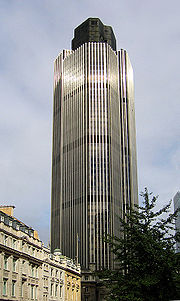I'm going to draw a bar chart to show the number of posts per month, since 2006.
The chart parameters I will use are:
cht=bhs(horizontal bar chart)chs=400x600(size)chd=t:5,6,2,2,2,2,3,7,...(data)chds=0,10(data scale - min/max)chxt=x,y,x(axes)chxl=0:|0|1|...|1:|Aug-06|Sep-06|...|2:||Number|(axis labels)chco=76A4FB(colour)chtt=Blog Posts by Month(title)
<img src="http://chart.apis.google.com/chart?cht=bhs&chbh=a&chs=400x600&chd=t:5,6,2,2,2,2,3,7,10,9,3,5,0,1,0,1,0,2,2,1,0,1,0,0,4,5,5,4,7,2,2,7&chds=0,10&chxt=x,y&chxl=0:|0|1|2|3|4|5|6|7|8|9|10|1:|Aug-06|Sep-06|Oct-06|Nov-06|Dec-06|Jan-07|Feb-07|Mar-07|Apr-07|May-07|Jun-07|Jul-07|Aug-07|Sep-07|Oct-07|Nov-07|Dec-07|Jan-08|Feb-08|Mar-08|Apr-08|May-08|Jun-08|Jul-08|Aug-08|Sep-08|Oct-08|Nov-08|Dec-08|Jan-09|Feb-09|Mar-09&chtt=Blog Posts by Month&chco=76A4FB"/>
Here's the same data put into a line chart.
The chart parameters I will use are:
cht=lc(line chart)chs=400x300(size)chd=t:7,2,2,7,4,5,...(data)chds=0,10(data scale - min/max)chxt=y,x(axes)chxl=0:|0|1|...|1:|Aug-06|...(axis labels)chco=80C65A(colour)chm=o,FF0000,0,-1,5.0|V,3399CC,0,23,0.5(circle each point; vertical line at peak)chtt=Blog Posts by Month(title)
<img src="http://chart.apis.google.com/chart?cht=lc&chbh=a&chs=400x300&chco=80C65A&chds=0,10&chd=t:7,2,2,7,4,5,5,4,0,0,1,0,1,2,2,0,1,0,1,0,5,3,9,10,7,3,2,2,2,2,6,5&chxt=y,x&chxl=0:|0|1|2|3|4|5|6|7|8|9|10|1:|Aug-06|Apr-07|Nov-07|Jul-08|Mar-09&chm=o,FF0000,0,-1,5.0|V,3399CC,0,23,0.5&chtt=Blog Posts by Month"/>
I'm going to use a Pie Chart to show the number of posts per year.
The chart parameters I will use are:
cht=p3(3D pie chart)chs=270x120(size)chd=t:22,21,44,13(data)chl=2006|2007|2008|2009(label)chtt=Blog Posts by Year(title)
<img src="http://chart.apis.google.com/chart?cht=p3&chs=270x120&chd=t:22,21,44,13&chl=2006|2007|2008|2009&chtt=Blog Posts by Year"/>
Google Chart API
